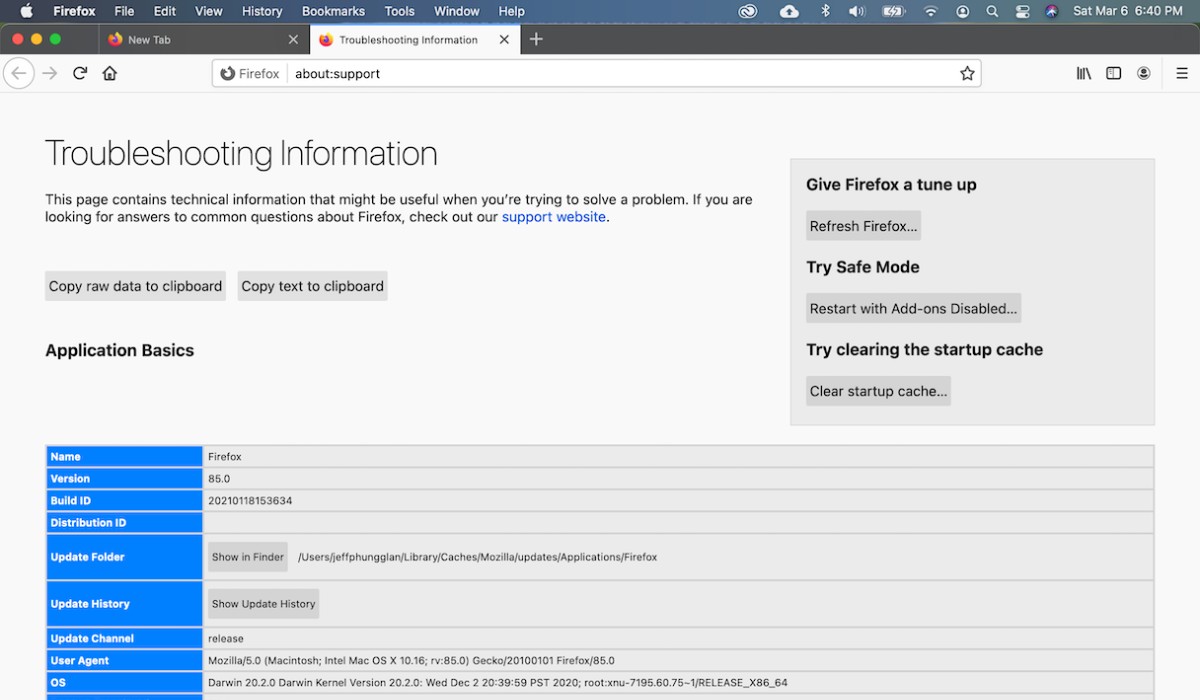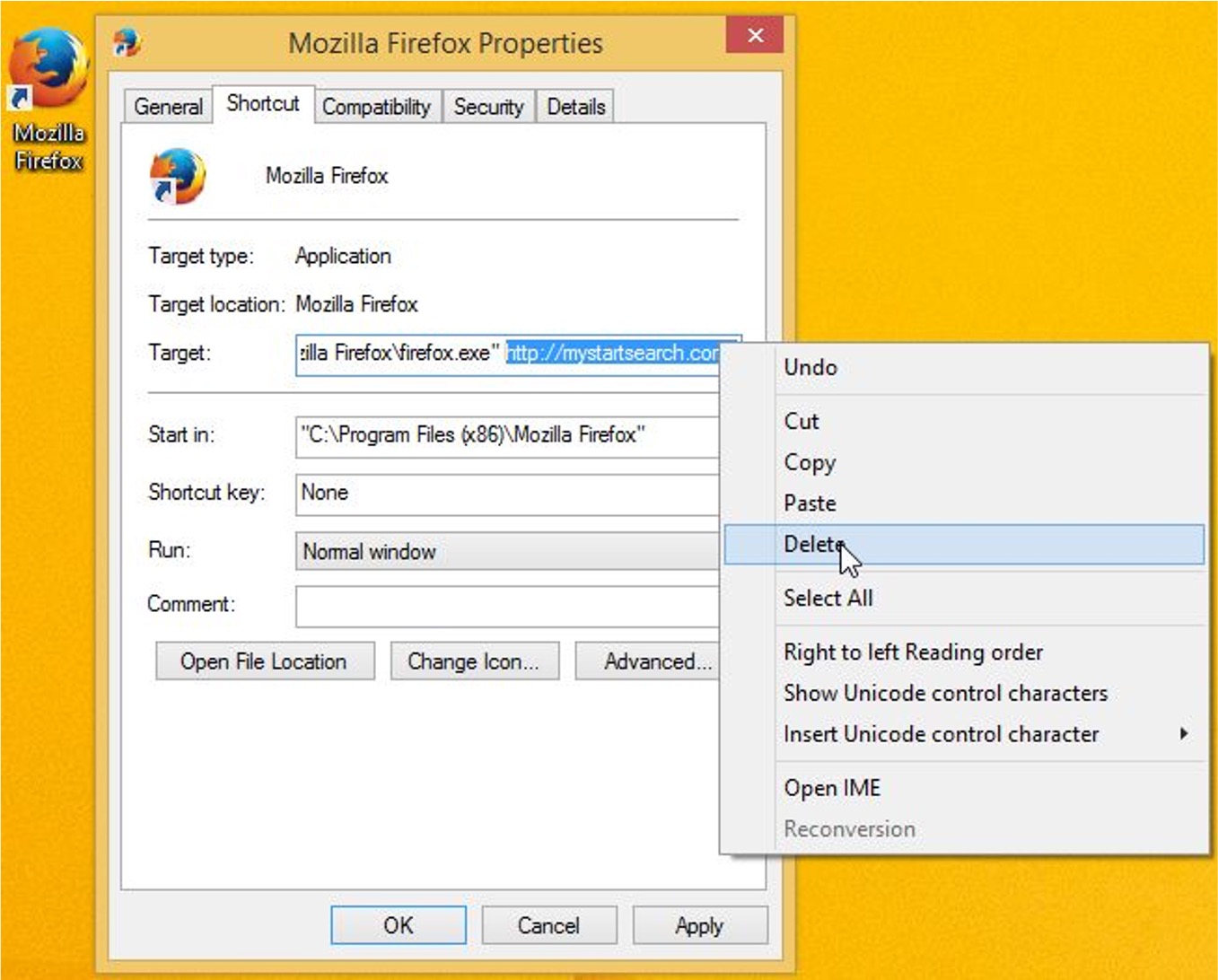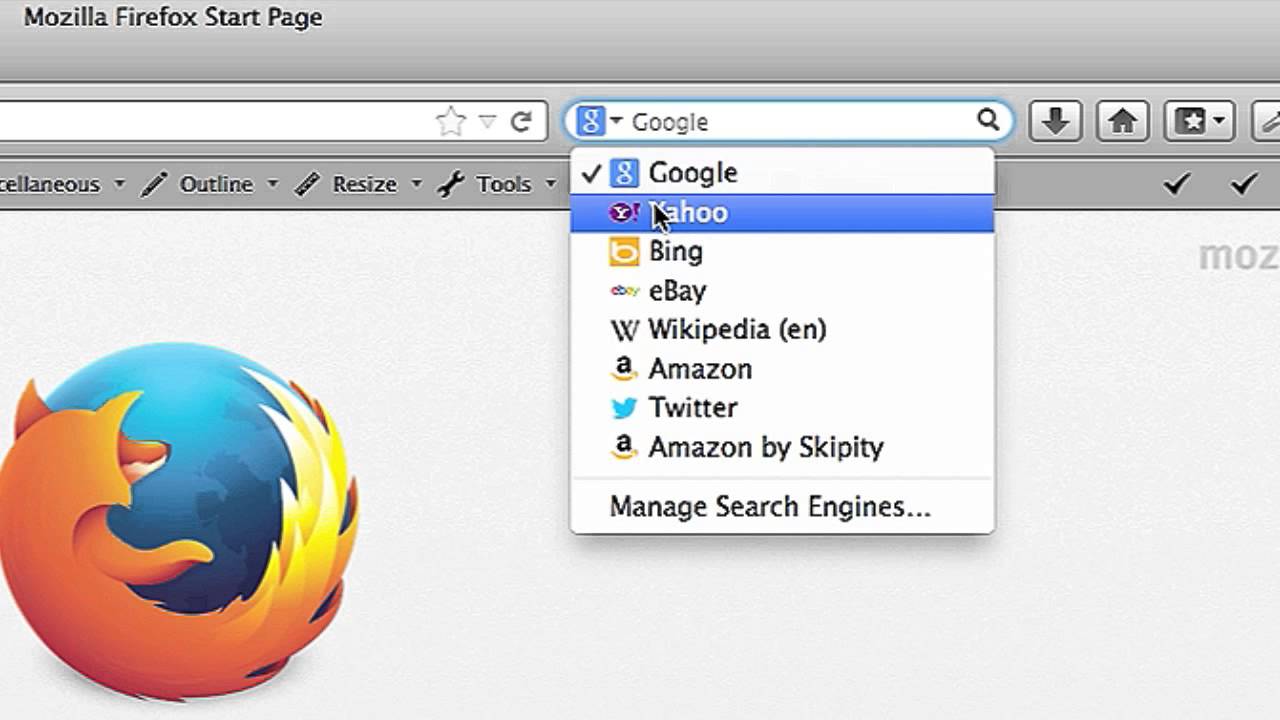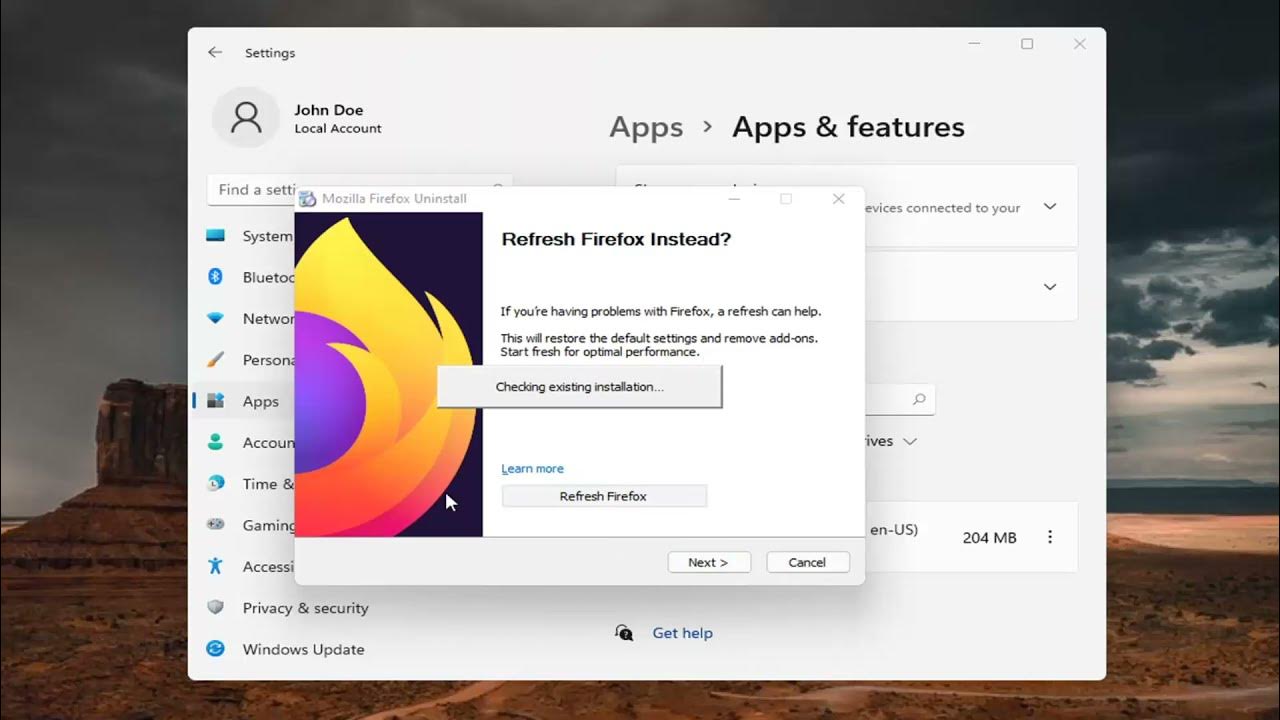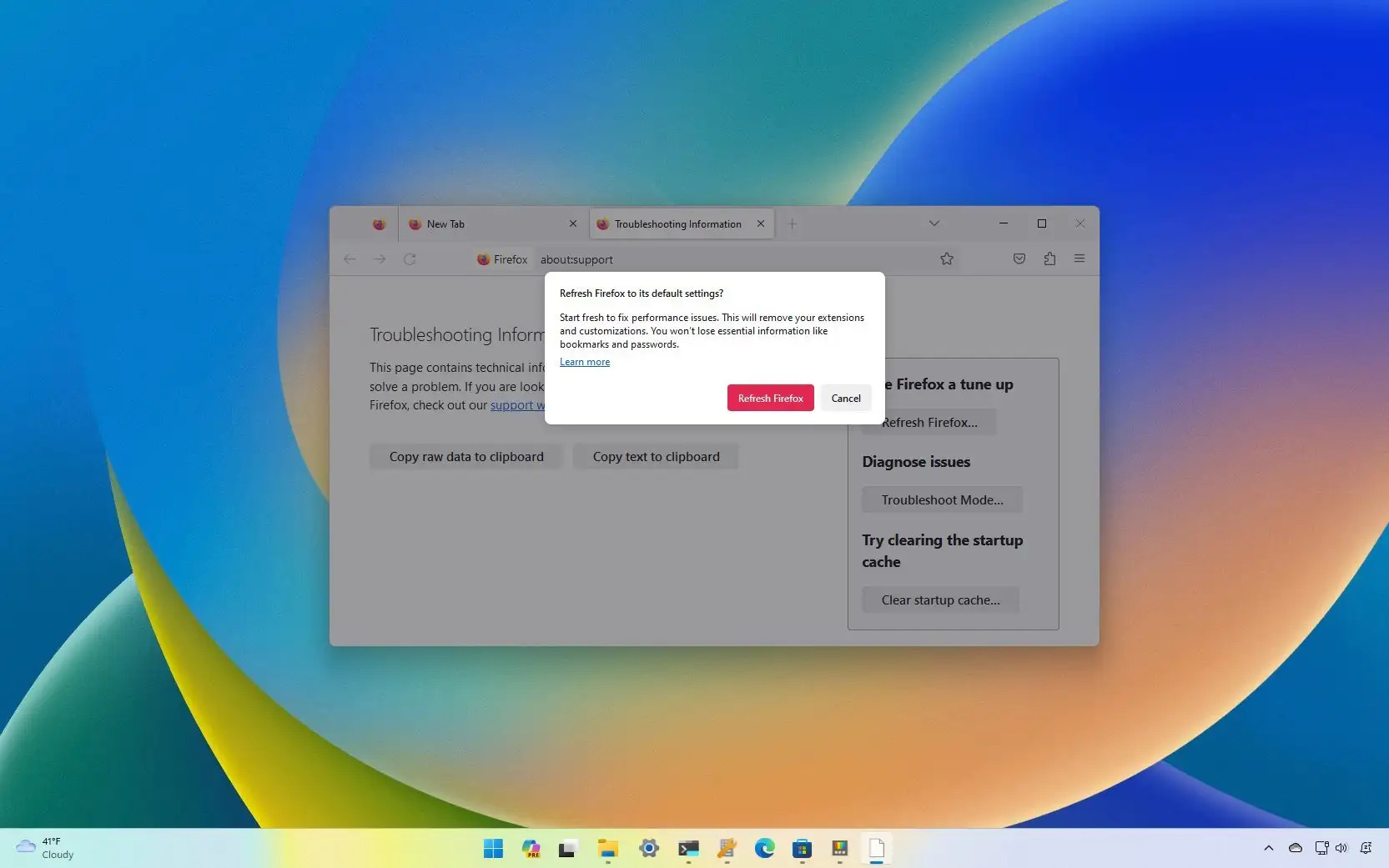Introduction
Resetting Firefox to its default settings can be a valuable troubleshooting step when you encounter issues such as sluggish performance, unexpected crashes, or unresponsive tabs. This process can help to resolve various problems by restoring the browser to its original state, eliminating any conflicting configurations or problematic extensions that may be causing issues.
Whether you're experiencing frequent freezes, unusual error messages, or a general decline in browsing speed, resetting Firefox can often provide a quick and effective solution. By following a few simple steps, you can return the browser to its default settings, potentially resolving the issues that have been hindering your browsing experience.
In the following guide, we will walk you through the process of resetting Firefox to its default settings. This will involve accessing the Firefox menu, navigating to the troubleshooting information section, and initiating the reset process. By the end of this walkthrough, you will have a clear understanding of how to perform this essential maintenance task, allowing you to address common browser issues and enjoy a smoother, more reliable browsing experience.
Step 1: Accessing the Firefox Menu
Accessing the Firefox menu is the initial step in the process of resetting the browser to its default settings. The Firefox menu provides access to various browser functions, including the option to troubleshoot and reset the browser. Here's how to access the Firefox menu:
-
Open Firefox: Launch the Firefox browser on your computer. You can do this by double-clicking the Firefox icon on your desktop or by searching for Firefox in your computer's applications or programs list and clicking to open it.
-
Locate the Menu Icon: Once Firefox is open, look to the top-right corner of the browser window. You should see three horizontal lines stacked on top of each other. This is the menu icon, also known as the "hamburger" icon due to its resemblance to a hamburger menu.
-
Click the Menu Icon: Click on the menu icon to open the Firefox menu. This will reveal a dropdown list of options that allow you to access various features and settings within the browser.
-
Explore the Menu: Take a moment to familiarize yourself with the options available in the Firefox menu. You will find a range of functions, including access to bookmarks, history, add-ons, and settings.
By following these steps, you can easily access the Firefox menu, setting the stage for the subsequent steps involved in resetting the browser to its default settings. Accessing the menu is the first crucial step in the process, providing the gateway to the troubleshooting and reset functions that can help address issues and improve your browsing experience.
Step 2: Selecting Help
After accessing the Firefox menu, the next step in the process of resetting Firefox to its default settings involves selecting the "Help" option. This step is essential for accessing the troubleshooting information that will enable you to initiate the reset process. Here's a detailed guide on how to select "Help" within the Firefox browser:
-
Locate the Help Option: Once you have opened the Firefox menu by clicking on the menu icon, you will see a list of options displayed in a dropdown menu. Among these options, you will find "Help" listed towards the bottom of the menu. It is represented by a question mark icon, symbolizing its function as a resource for assistance and troubleshooting.
-
Click on Help: To proceed with the reset process, click on the "Help" option within the Firefox menu. This action will open a secondary menu that provides access to additional features and support resources.
-
Explore the Help Menu: Upon clicking on "Help," a new menu will appear, presenting various options to assist users with troubleshooting, customization, and support. Take a moment to explore the contents of the Help menu, as it offers valuable resources for resolving issues and optimizing your browsing experience.
-
Prepare for Troubleshooting: Within the Help menu, you will find a range of options designed to aid users in troubleshooting and resolving common browser issues. These resources can be invaluable in diagnosing and addressing the specific problems you may be encountering with Firefox.
By selecting the "Help" option within the Firefox menu, you gain access to the essential resources needed to troubleshoot and reset the browser to its default settings. This step sets the stage for the subsequent actions required to initiate the reset process, ultimately aiming to resolve any persistent issues and restore the browser to its optimal state.
Once you have successfully navigated to the "Help" section, you are ready to proceed to the next step in the process of resetting Firefox, which involves accessing the troubleshooting information necessary for initiating the reset.
Step 3: Choosing Troubleshooting Information
Upon accessing the "Help" section within the Firefox menu, the next crucial step in the process of resetting Firefox to its default settings involves choosing "Troubleshooting Information." This step is pivotal in gaining access to detailed browser data and initiating the reset process. Here's a comprehensive guide on how to choose "Troubleshooting Information" within the Firefox browser:
-
Navigate to Troubleshooting Information: Within the "Help" menu, you will find the option labeled "Troubleshooting Information." This option is designed to provide users with detailed insights into the browser's performance, settings, and installed extensions. Click on "Troubleshooting Information" to proceed with the troubleshooting and reset process.
-
Explore the Troubleshooting Information Page: Upon selecting "Troubleshooting Information," Firefox will open a new tab displaying a wealth of technical details about the browser. This page offers valuable information, including the browser version, installed extensions, modified preferences, and important application details. Take a moment to review this information, as it can offer insights into potential issues affecting the browser's performance.
-
Identify Troubleshooting Options: As you explore the Troubleshooting Information page, you will encounter a section titled "Give Firefox a tune up." This section includes various troubleshooting options, such as refreshing Firefox, which can help to resolve issues by restoring the browser to its default state. These options are designed to address common problems and improve the overall performance of the browser.
-
Prepare for the Reset Process: Before proceeding with the reset, take note of any custom settings, preferences, or extensions that you may want to reconfigure or reinstall after the reset. It's important to be aware of the potential impact on your browsing experience, as the reset process will revert Firefox to its default settings, potentially removing customizations and installed extensions.
By choosing "Troubleshooting Information" within the Firefox browser, you gain access to essential technical details and troubleshooting options that are instrumental in the process of resetting the browser to its default settings. This step sets the stage for the subsequent action of initiating the reset process, aiming to address persistent issues and restore the browser to its optimal state.
Once you have successfully navigated to the Troubleshooting Information page, you are ready to proceed to the next step in the process of resetting Firefox, which involves initiating the reset to default settings.
Step 4: Resetting Firefox to Default Settings
Resetting Firefox to its default settings is a straightforward yet powerful process that can effectively address a wide range of browser issues. By initiating the reset, you can restore Firefox to its original state, eliminating conflicting configurations, problematic extensions, and other factors that may be impacting its performance. Here's a detailed guide on how to reset Firefox to default settings:
-
Initiating the Reset Process: After accessing the Troubleshooting Information page, locate the "Give Firefox a tune up" section. Within this section, you will find the option to "Refresh Firefox." Click on this option to initiate the reset process.
-
Confirmation Prompt: Upon selecting "Refresh Firefox," a confirmation prompt will appear, informing you about the impact of the reset. This prompt outlines the actions that will be taken during the reset, including the restoration of Firefox's settings to their default state and the preservation of essential information such as bookmarks and passwords. To proceed with the reset, click on the "Refresh Firefox" button within the prompt.
-
Reset Progress: Once you confirm the reset, Firefox will proceed to initiate the process. During this time, the browser will create a new profile while retaining your essential data. The reset process may take a few moments to complete, depending on the amount of data and customizations present in your browser.
-
Completion and Restoration: After the reset is complete, Firefox will reopen with the default settings restored. Your essential information, such as bookmarks, browsing history, and saved passwords, will be preserved. However, any custom settings, preferences, and installed extensions will be removed as part of the reset process.
-
Post-Reset Configuration: Following the reset, you may need to reconfigure certain settings and preferences based on your browsing habits. Additionally, if you had installed extensions or add-ons, you will have the option to reinstall them based on your requirements.
By following these steps, you can effectively reset Firefox to its default settings, providing a fresh start for the browser and potentially resolving the issues that prompted the reset. This process can help to address performance issues, unresponsive tabs, unexpected crashes, and other persistent problems, ultimately leading to a smoother and more reliable browsing experience.
Remember that resetting Firefox to its default settings is a powerful troubleshooting tool, and it's important to consider this option when encountering persistent issues that impact your browsing experience.
Conclusion
In conclusion, the process of resetting Firefox to its default settings serves as a valuable troubleshooting tool for addressing a wide range of browser issues. By following the steps outlined in this guide, users can effectively navigate through the Firefox menu, access the necessary troubleshooting information, and initiate the reset process, ultimately aiming to restore the browser to its optimal state.
Resetting Firefox can be a transformative solution for users encountering sluggish performance, unexpected crashes, unresponsive tabs, or other persistent issues. By reverting the browser to its default settings, conflicting configurations, problematic extensions, and other factors that may be impacting its performance can be eliminated, potentially leading to a smoother and more reliable browsing experience.
It's important to note that while the reset process preserves essential information such as bookmarks, browsing history, and saved passwords, any custom settings, preferences, and installed extensions will be removed. Therefore, users should be prepared to reconfigure settings and preferences based on their browsing habits, and consider reinstalling extensions or add-ons as needed.
Furthermore, the decision to reset Firefox should be approached with careful consideration, especially when encountering persistent issues that impact the browsing experience. Before initiating the reset, it's advisable to review any customizations and extensions that will be affected, ensuring that essential data is backed up and prepared for restoration post-reset.
By understanding the process of resetting Firefox to default settings and its potential impact, users can effectively leverage this troubleshooting tool to address common browser issues and optimize their browsing experience. This proactive approach to maintenance and troubleshooting can contribute to a more seamless and enjoyable browsing experience, ultimately enhancing productivity and satisfaction while using the Firefox browser.
In summary, the ability to reset Firefox to its default settings empowers users to take control of their browsing experience, addressing issues and restoring the browser to its optimal state. By following the steps outlined in this guide, users can confidently navigate the reset process, leveraging this essential maintenance task to overcome challenges and enjoy a more reliable and efficient browsing experience.









